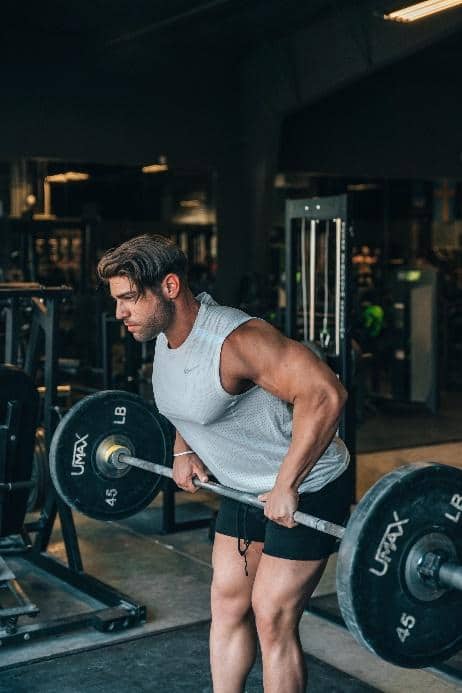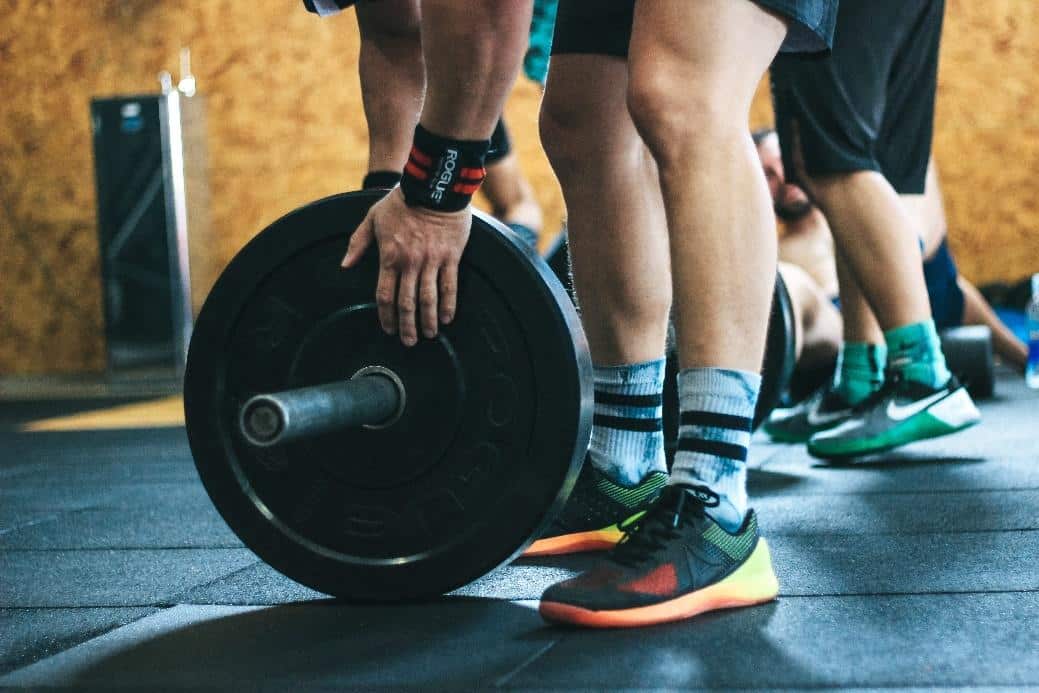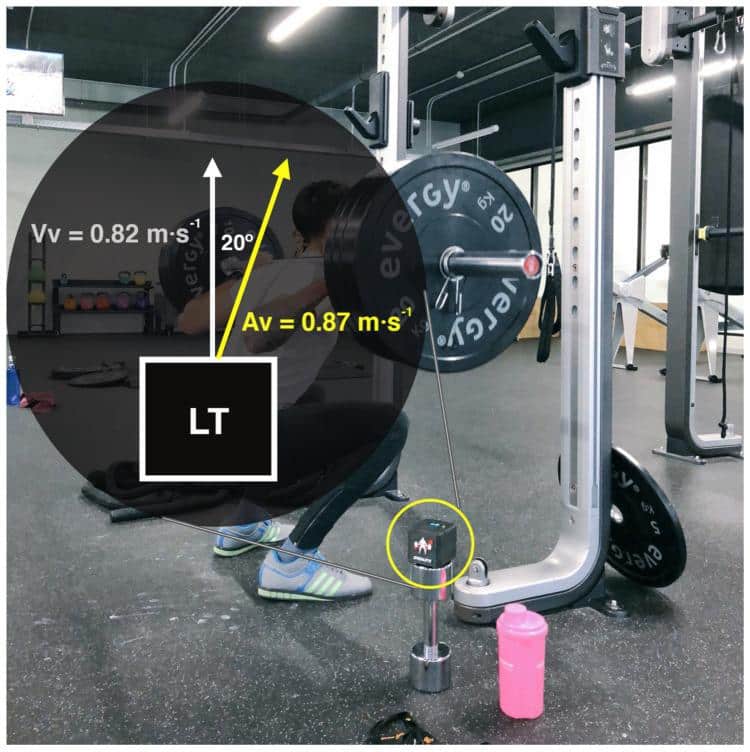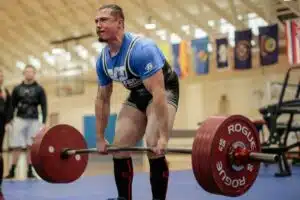What is Progressive Overload and Why is it Important to Utilize this Principle in Training?

Strength training is used to develop muscle size, strength, endurance, power, and many other positive physiological outcomes. To achieve the desired adaptations, the training regimen must involve some form of progression for a given stimulus, a phenomenon known as progressive overload. Progressive overload training involves gradually increasing the tension exerted on the body during strength sessions (Kraemer et al., 2002). This way, the musculature and soft tissues will adapt to increasingly stressful stimuli.
If we don’t apply progressive overload training, our athletes will adapt to the received stimulus and won’t improve further due to not being subjected to greater tension. Exercise-induced pain (DOMS) perfectly explains what progressive overload entails. Surely, when you first trained, you experienced soreness, like everyone else. However, despite doing the same in the gym two weeks later, or even more than you did on the first day, you didn’t experience soreness again. The reason is that your body adapted to the tension you subjected it to, and what was once stressful for it ceased to be so. To experience soreness again, you should increase volume or intensity and stress the body differently; that’s what progressive overload is about. Conversely, if you always train with the same volume and intensity, your body won’t produce improvements because it’s adapted to them.
Progressive overload training can be applied through a variety of progression schemes and periodization models (Helms et al., 2016). Most current programs involve some form of load manipulation by varying volume and intensity, either by adding load to the bar or increasing sets and repetitions (Plotkin et al., 2022; Suchomel et al., 2021). Strength training based on velocity (VBT) is not yet firmly established in weight rooms, so the use of velocity as a variable or objective fatigue is not commonly used within progressive overload training yet (Balsalobre-Fernández & Torres-Ronda, 2021).
VBT allows manipulation of velocity and other related variables to achieve new adaptations and control training improvement progress. By implementing VBT in progressive overload training, we obtain displacement velocity data that we can manipulate for the benefit of our athlete’s performance, thus drastically reducing the risk of injury (Zhang et al., 2022). Although VBT has been used for some decades, it has only been relatively recently that researchers have been refining its methodology with the help of new available technology. An example of this is the long list of VBT encoders currently available on the market: Vitruve, GymAware, Tendo FitroDyne, Bar Sensei, Perch, Elite Form, PUSH Band, and many more.
Encoders like Vitruve allow measuring velocity, power, range of motion, and other variables in a valid and reliable way at a much more affordable price than laboratory equipment. Furthermore, their ease of transport and data analysis make the VBT device a strategy that has changed the paradigm in progressive overload training (Balsalobre-Fernández & Torres-Ronda, 2021).
VBT versus 1RM: An Extra Quality in Progressive Overload Training

The one-repetition maximum (1RM), not two, is the most commonly used indicator as a reference for prescribing strength training, as well as the maximum number of repetitions with a certain percentage of that weight (%1RM). This way of programming sessions has limitations that led the scientific community to seek other strategies such as velocity-based training (VBT) (González-Badillo et al., 2022). Although it is not new, as linear transducers were already used in the 1970s to measure velocity (Richter, 1973), it is true that at present we can monitor, analyze, and prescribe VBT much better than in the past. By knowing the velocity of load displacement, we can be much more precise than with 1RM for several reasons.
Progressive Overload Training Requires Knowing the Athlete’s 1RM
The traditional 1RM is calculated with repetitions until failure, preferably with loads close to maximum to increase accuracy. This type of test requires a lot of time and athlete fatigue, who must also perform a 1RM test for each exercise and repeat it periodically to recalculate loads and track progress. This would be one way to accurately prescribe progressive overload. In contrast, velocity measurement devices like Vitruve calculate 1RM during warm-up without the need for maximal testing and avoiding its drawbacks (Dorrell et al., 2020).
To obtain the current day’s 1RM, it suffices to ask the athlete to perform a few sets of the main exercises planned for the session during warm-up, for example, hex bar deadlifts and bench press. The Vitruve encoder will indicate the velocity at which a certain load was moved, which is associated with a %1RM and can be used to estimate the 1RM for that day (González-Badillo et al., 2022). By monitoring the athlete, we will obtain their individual load-velocity profile, which we will refine over time with new data obtained.
1RM Varies Daily
The 1RM varies daily, complicating progressive overload training. However, with VBT, we can determine the real 1RM each day (González-Badillo et al., 2022). By knowing exactly what our 1RM is with the Vitruve VBT device, we can train with the %1RM that truly matters. Without using a velocity encoder, the athlete may be training above their capabilities on a fatigued day or below their capabilities on a stronger day. Progressive overload training requires precision to truly gauge improvement over time, as traditional 1RM testing may yield inaccurate data.
The following table, extracted from Balsalobre-Fernández & Torres-Ronda (2021), illustrates the difference between using a fixed load without considering daily 1RM variations (top) and prescribing daily loads based on the daily 1RM obtained with a velocity encoder like Vitruve’s (bottom). Progressive overload training will be much more effective and precise if we know our athlete’s status session by session to prescribe the appropriate load at that moment.

The Athlete Has Improved, but How Much?
An athlete may lift more weight, but if we don’t know the difference in speed between the two loads, we won’t accurately determine the extent of the improvement. Performance improvement is typically measured by the increase in weight lifted by the athlete. For example, if a few weeks ago the athlete lifted 325 pounds for five repetitions and now lifts the same weight for 345 pounds, they have increased the weight by 20 pounds in the exercise.
VBT adds a more precise speed component. For example, six weeks ago, the athlete lifted 280 pounds at 0.5 m/s, and now lifts 295 pounds at the same speed of 0.5 m/s. This translates to the athlete being able to apply more force in the same time frame. In sports performance, it’s not just about lifting more weight unless it’s a pure strength sport like powerlifting; it’s about being able to move that weight faster. This is the basis of progressive overload with VBT, which we will explore next.
Types of Progressive Overload Training with VBT Encoder

There is no doubt that the more precise the loads, the greater the progress, and the further we move away from athlete stagnation, whether due to overtraining or undertraining (Jiménez-Reyes et al., 2021). So far, we have seen how VBT provides us with that precision in selecting the loads for training. But how can we progress using a VBT encoder like Vitruve? In addition to traditional progressive overload strategies (increasing load, repetitions, sets, range of motion, and reducing rest time), with a VBT device, three forms of progressive overload are added: moving the same load at a faster speed, moving more load at the same speed, and performing more repetitions for the same loss of speed.
Moving the Same Load at a Faster Speed
Progressive overload can be achieved by either increasing the weight while maintaining the same number of repetitions or by increasing the repetitions with the same weight (Plotkin et al., 2022). Depending on the discipline of our athlete, we may favor one form of progression over the other. One method of progressive overload training with VBT involves moving a load faster than before. If our athlete was squatting 150 kg at 0.4 m/s two weeks ago and now moves the same 150 kg at 0.45 m/s, they have improved because they can apply more speed with the same load.
By moving the same loads faster, the athlete is shifting the force-velocity curve to the right. Depending on our goal, we will work more on one zone or another of this force-velocity curve, using either lighter loads (punching in boxing, batting in baseball, or change of direction in basketball) or heavier loads (weightlifting). In the prescription of the training program, we will ask the athlete to progressively increase the speed at which they move the same load. Therefore, one form of progressive overload with VBT is to progressively move a fixed load faster each time.
Increasing Load at Constant Speed in VBT Training
Progressive overload training with Velocity-Based Training (VBT) can also aim to increase the load while maintaining the same velocity as a lower load. Using the previous example, imagine the athlete was squatting 150 kg at a velocity of 0.4 m/s. After a couple of weeks, we ask the athlete to squat 155 kg, 5 kg more, while maintaining at least the same velocity of 0.4 m/s. If the Vitruve VBT device indicates that the lift was performed at that velocity or higher, the athlete is capable of applying more force at the same velocity as before.
In the training prescription, we will set a fixed velocity and ask the athlete to increase the load for that same velocity. A mixed form of progressive overload with VBT involves increasing both load and velocity, enabling the athlete to move heavier loads more quickly, which correlates with higher jump heights, longer throws, and ultimately greater force application in less time. The long-term goal of progressive overload training is to alternate sessions where we fix the load and request higher velocity and sessions where we fix the velocity and demand the athlete to move heavier loads.
Increasing Repetitions for the Same Velocity Loss
Una tercera forma de entrenamiento de sobrecarga progresiva haciendo uso de un codificador VBT como el de Vitruve es conseguir que el atleta sea más resistente a la fatiga. La velocidad de desplazamiento de una carga va disminuyendo a medida que hacemos repeticiones, siendo la primera repetición la más rápiA third form of progressive overload training using a VBT encoder like Vitruve is to make the athlete more resistant to fatigue. The velocity of a load decreases as repetitions are performed, with the first repetition being the fastest, barring execution errors. Fatigue prescription with VBT is based on a percentage of velocity loss, which can be low or high. The higher the percentage of velocity loss, the greater the accumulated fatigue in that session.
In addition to aiming to move a fixed load faster or to move a heavier load at a fixed speed, we can also aim to perform more repetitions before reaching a predetermined velocity loss. For example, imagine your athlete did a bench press set with 100 kg two weeks ago, for which you programmed a 20% velocity loss. This means the athlete had to perform repetitions until one of them was 20% slower than the fastest repetition, which is typically the first one. Following this instruction, the athlete completed five repetitions, with the sixth one excluded because it exceeded the 20% velocity loss threshold.
After two weeks, we repeat the same training prescription: perform as many bench press repetitions as possible with 100 kg until you reach a 20% velocity loss compared to the fastest repetition. If the training has been effective, the fastest repetition will be higher than it was two weeks ago. However, in this progressive overload model, our goal is for the athlete to perform six or more repetitions before reaching that 20% velocity loss. Achieving this indicates that the athlete is more resistant to the same load because they can apply force more times before reaching the predetermined velocity loss. Therefore, as a coach, you can also set a velocity loss and a load, instructing the athlete to perform more repetitions before reaching that predetermined velocity loss.
References
Balsalobre-Fernández, C., & Torres-Ronda, L. (2021). The Implementation of Velocity-Based Training Paradigm for Team Sports: Framework, Technologies, Practical Recommendations and Challenges. Sports, 9(4). https://doi.org/10.3390/SPORTS9040047
Dorrell, H. F., Smith, M. F., & Gee, T. I. (2020). Comparison of Velocity-Based and Traditional Percentage-Based Loading Methods on Maximal Strength and Power Adaptations. Journal of Strength and Conditioning Research, 34(1), 46–53. https://doi.org/10.1519/JSC.0000000000003089
Galiano, C., Pareja-Blanco, F., de Mora, J. H., & de Villarreal, E. S. (2022). Low-Velocity Loss Induces Similar Strength Gains to Moderate-Velocity Loss During Resistance Training. Journal of Strength and Conditioning Research, 36(2), 340–345. https://doi.org/10.1519/JSC.0000000000003487
González-Badillo, J. J., Sánchez-Medina, L., Ribas-Serna, J., & Rodríguez-Rosell, D. (2022). Toward a New Paradigm in Resistance Training by Means of Velocity Monitoring: A Critical and Challenging Narrative. Sports Medicine – Open, 8(1). https://doi.org/10.1186/S40798-022-00513-Z
Helms, E. R., Cronin, J., Storey, A., & Zourdos, M. C. (2016). Application of the Repetitions in Reserve-Based Rating of Perceived Exertion Scale for Resistance Training. Strength and Conditioning Journal, 38(4), 42–49. https://doi.org/10.1519/SSC.0000000000000218
Jiménez-Reyes, P., Castaño-Zambudio, A., Cuadrado-Peñafiel, V., González-Hernández, J. M., Capelo-Ramírez, F., Martínez-Aranda, L. M., & González-Badillo, J. J. (2021). Differences between adjusted vs. non-adjusted loads in velocity-based training: consequences for strength training control and programming. PeerJ, 9. https://doi.org/10.7717/PEERJ.10942/SUPP-1
Kraemer, W. J., Ratamess, N. A., & French, D. N. (2002). Resistance training for health and performance. Current Sports Medicine Reports, 1(3), 165–171. https://doi.org/10.1249/00149619-200206000-00007
Plotkin, D., Coleman, M., Van Every, D., Maldonado, J., Oberlin, D., Israetel, M., Feather, J., Alto, A., Vigotsky, A. D., & Schoenfeld, B. J. (2022). Progressive overload without progressing load? The effects of load or repetition progression on muscular adaptations. PeerJ, 10. https://doi.org/10.7717/PEERJ.14142/SUPP-2
Richter, G. (1973). Ein Trainergerät zur Objektivierung der sportarts… https://www.iat.uni-leipzig.de/datenbanken/iks/tupl/Record/1001269
Suchomel, T. J., Nimphius, S., Bellon, C. R., Hornsby, W. G., & Stone, M. H. (2021). Training for Muscular Strength: Methods for Monitoring and Adjusting Training Intensity. Sports Medicine 2021 51:10, 51(10), 2051–2066. https://doi.org/10.1007/S40279-021-01488-9
Zhang, X., Feng, S., & Li, H. (2023). The Effect of Velocity Loss on Strength Development and Related Training Efficiency: A Dose-Response Meta-Analysis. Healthcare (Basel, Switzerland), 11(3). https://doi.org/10.3390/HEALTHCARE11030337
Zhang, X., Feng, S., Peng, R., & Li, H. (2022). The Role of Velocity-Based Training (VBT) in Enhancing Athletic Performance in Trained Individuals: A Meta-Analysis of Controlled Trials. International Journal of Environmental Research and Public Health, 19(15). https://doi.org/10.3390/IJERPH19159252












